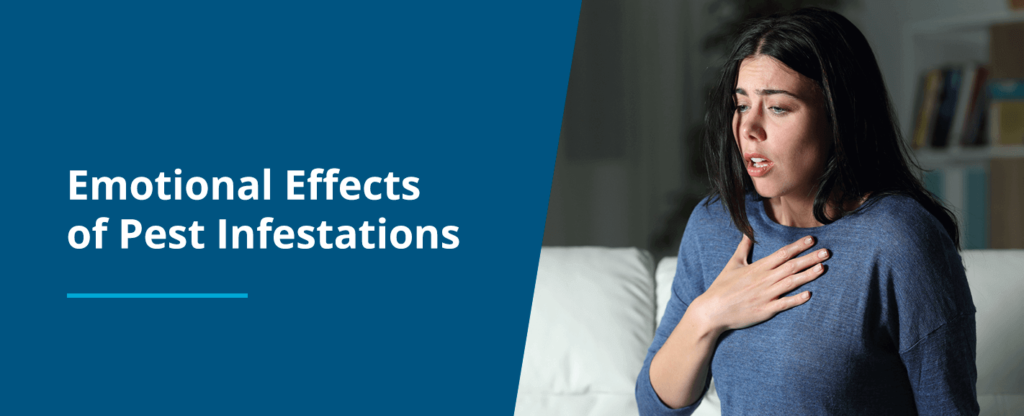The Definitive Guide to Eco Bed Bug Exterminators Dc
The Definitive Guide to Eco Bed Bug Exterminators Dc
Blog Article
How Eco Bed Bug Exterminators Dc can Save You Time, Stress, and Money.
Table of ContentsThe 8-Minute Rule for Eco Bed Bug Exterminators DcThe Ultimate Guide To Eco Bed Bug Exterminators DcThe Facts About Eco Bed Bug Exterminators Dc RevealedGetting My Eco Bed Bug Exterminators Dc To WorkThe 15-Second Trick For Eco Bed Bug Exterminators Dc
Because pesticides are hazardous, they are likewise possibly hazardous to human beings, pets, various other microorganisms, and the setting. People that make use of pesticides or routinely come in contact with them must recognize the family member toxicity, possible health and wellness impacts, and preventative procedures to lower direct exposure to the items they utilize. Hazard, or threat, of making use of pesticides is the possibility for injury, or the degree of danger entailed in making use of a chemical under an offered collection of problems.
Applicators can lessen or almost get rid of direct exposure-- and therefore reduce threat-- by complying with the label instructions, using individual protective garments and equipment (PPE), and dealing with the pesticide properly. Even more than 95 percent of all chemical exposures come from facial direct exposure, mainly to the hands and lower arms. By using a set of unlined, chemical-resistant gloves, this kind of exposure can be almost gotten rid of.
The hazardous results that take place from a single exposure by any kind of path of access are labelled "severe effects." The 4 routes of direct exposure are dermal (skin), breathing (lungs), dental (mouth), and the eyes. Intense toxicity is figured out by checking out the dermal toxicity, inhalation toxicity, and dental toxicity of test pets.
Eco Bed Bug Exterminators Dc - The Facts
Severe toxicity is measured as the amount or focus of a toxicant-- the a.i.-- called for to kill 50 percent of the pets in a test population. This measure is typically revealed as the LD50 (dangerous dosage 50) or the LC50 (deadly concentration 50). In addition, the LD50 and LC50 worths are based upon a solitary dose and are tape-recorded in milligrams of chemical per kilo of body weight (mg/kg) of the guinea pig or partially per million (ppm).
The lower the LD50 or LC50 value of a pesticide item, the better its poisoning to human beings and pets. Pesticides with a high LD50 are the least hazardous to people if used according to the instructions on the item label. The persistent toxicity of a pesticide is identified by subjecting guinea pig to long-lasting exposure to the energetic component.
The persistent poisoning of a chemical is much more challenging than intense toxicity to figure out via lab analysis. Products are classified on the basis of their family member acute poisoning (their LD50 or LC50 worths). Chemicals that are identified as highly poisonous (Poisoning Classification I) on the basis of either dental, facial, or inhalation toxicity must have the signal words risk and poisonous substance printed in red with a skull and crossbones sign plainly presented on the front panel of the plan tag.
The acute (single dose) dental LD50 for chemical items in this group ranges from a trace total up to 50 mg/kg. For instance, exposure of a couple of decreases of a material taken by mouth can be fatal to a 150-pound person. Some pesticide products have just the signal word risk, which informs you absolutely nothing concerning the intense poisoning, simply that the item can cause severe eye damages or serious skin irritation
Examine This Report about Eco Bed Bug Exterminators Dc
In this classification, the intense oral LD50 arrays from 50 to 500 mg/kg. A teaspoon to an ounce my sources of this product could be fatal to a 150-pound individual (bed bug exterminator). Chemical items classified as either a little toxic or fairly nontoxic (Toxicity Groups III and IV) are required to have the signal word CAUTION on the chemical label

All pesticide toxicity values, including the LD50, can be found on located product's Material Safety Data Security InformationMSDS). Pesticide tags and MSDS can be acquired from retailers or makes - https://giphy.com/channel/ecobedbug3xt. The signs of pesticide poisoning can range from a moderate skin irritability to coma or even fatality.
Because of potential health and wellness issues, pesticide users and trainers need to acknowledge the common signs and signs of pesticide poisoning. The results, or signs and symptoms, of pesticide poisoning can be extensively defined as either topical or systemic.
10 Easy Facts About Eco Bed Bug Exterminators Dc Shown
Dermatitis, or swelling of the skin, is accepted as the most frequently reported topical result associated with pesticide exposure. Some individuals tend to cough, hiss, or sneeze when revealed to pesticide sprays.
This signs and symptom generally subsides within a couple of minutes after a person is eliminated from the exposure to the toxic irritant. Nevertheless, a response to a chemical product that causes someone not just to sneeze and cough yet also to develop serious intense breathing symptoms is more likely to be a real hypersensitivity or sensitive reaction.
Systemic effects are fairly various from topical impacts. They often take place away from the original factor of get in touch with as a result of the chemical being soaked up right into and dispersed throughout the body. Systemic effects typically include queasiness, vomiting, tiredness, headache, and digestive problems. In advanced poisoning instances, the person might experience adjustments in heart rate, problem breathing, convulsions, and coma, which could lead to fatality.
Report this page